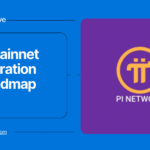What is Chainlink?
Chainlink is an innovative framework designed to build decentralized oracle networks (DONs) that facilitate the integration of real-world data into blockchain ecosystems. This capability enables the development of hybrid smart contracts that can interact with both blockchain and external data sources seamlessly. Through its decentralized services, Chainlink supports critical functionalities including price feeds, proof of reserve, verifiable randomness, keepers, and integration capabilities with any web API.
A Brief History of Chainlink
The inception of Chainlink can be traced back to 2014, when it was developed by Chainlink Labs, previously known as Smart Contract Ltd. Founded by Sergey Nazarov and Steve Ellis, the Chainlink network went live on the Ethereum mainnet on June 1, 2019. Since then, it has expanded to support various blockchains and layer 2 networks like Polygon, BSC, Avalanche, and Arbitrum, significantly enhancing its reach within the blockchain community.
The Purpose and Use of Chainlink
To comprehend the purpose of Chainlink, it’s essential to explore the Chainlink network and the LINK token. The network is immensely valuable for smart contract applications that require real-world data and off-chain computations. Additionally, it serves data providers, allowing them to monetize their datasets by selling APIs to these smart contracts. The most notable application lies in securing decentralized finance (DeFi) protocols that demand reliable financial market data. Chainlink supplies a variety of on-chain data feeds that currently secure tens of billions of dollars across platforms like Aave, Compound, and Synthetix.
For those interested in acquiring LINK tokens, they can be traded on numerous centralized cryptocurrency exchanges. The most popular option is the Coinbase exchange, where the LINK/USD trading pair boasts a significant trading volume, along with other exchanges like KuCoin and OKX also providing trading services.














